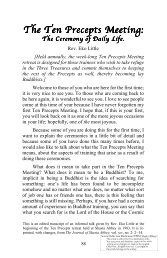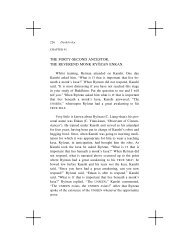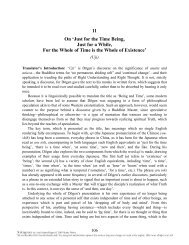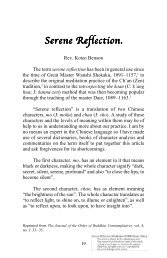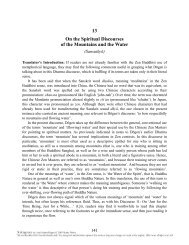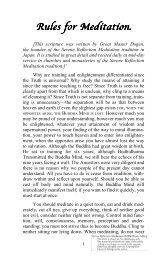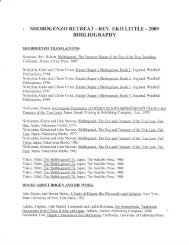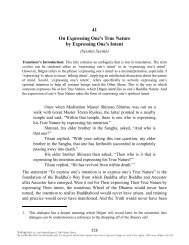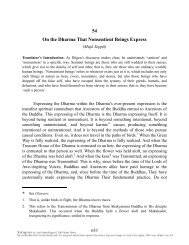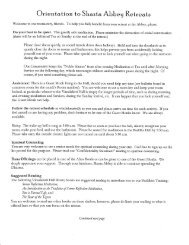Shinjin Gakudo - thezensite
Shinjin Gakudo - thezensite
Shinjin Gakudo - thezensite
You also want an ePaper? Increase the reach of your titles
YUMPU automatically turns print PDFs into web optimized ePapers that Google loves.
Shōbōgenzō: On Learning the Way Through Body and Mind 498<br />
expression something that has not been heard before, due to its implications that<br />
the ten quarters are equal to each other and that the universe is equal to itself.<br />
A human body is composed of four elements* and five skandhas. * Its four<br />
elements and its six sense organs, all together, are not something thoroughly<br />
understood by ordinary, worldly people, but they are something that saintly people<br />
have thoroughly explored through their training. Further, we need to clearly see the<br />
ten quarters within a single dust mote, and it is not that the ten quarters are all<br />
packed up in one sack. 15 Sometimes, the Monks’ Hall and the Buddha Hall are<br />
erected within a single mote of dust, and sometimes the whole universe is erected<br />
in the Monks’ Hall and the Buddha Hall, for it is from these Halls that the universe<br />
has been built. The principle of this is that the universe in all ten quarters is our real<br />
Body. Do not follow erroneous views that deny causality. Since the universe is<br />
beyond measure, it is beyond being wide or narrow. The universe in all ten quarters<br />
is the eighty-four thousand skandhas that give expression to the Dharma, the<br />
eighty-four thousand meditative states, and the eighty-four thousand invocations.<br />
The eighty-four thousand skandhas that give expression to the Dharma are the<br />
turning of the Wheel of the Dharma, and the place where the Wheel of the Dharma<br />
turns spans the whole universe and spans all time. It is not a place without<br />
directions or boundaries: it is our real Body. You and I, right now, are human<br />
beings who are the real Body of the whole universe in all ten quarters. We learn the<br />
Way without ever making a mistake about such things. We go on, discarding one<br />
body and receiving another, for three great asamkhyeya eons, or thirteen great<br />
asamkhyeya eons, or immeasurable asamkhyeya eons, 16 during which time,<br />
without fail, we learn the Way. We learn the Way by now stepping forward, now<br />
stepping back. Our respectfully bowing, with hands in gasshō,* is our everyday<br />
behavior of walking and standing still. In our painting a picture of a withered tree,<br />
or in our polishing a tile made of dead ashes, there is not the slightest break.<br />
Though our days, as they say, are short and swift in their passing, our learning the<br />
Way is profound and far-reaching. So, even though the demeanor of those who<br />
have abandoned their homes and left home life behind to become monks may seem<br />
bleak, do not confuse them with woodcutters. And even though their lives may<br />
seem a struggle, they are not the same as farmers working in rice fields. So, do not<br />
compare them by discussing whether they are deluded or enlightened, or good or<br />
bad; do not pursue such questions as “Are they false or true” or “Are they genuine<br />
or fake”<br />
15. That is, there is no inside or outside of them.<br />
16. ‘Asamkhyeya’ is a Sanskrit term of measurement for something that is experienced as being<br />
interminably long, but which simply takes as long as it takes.





